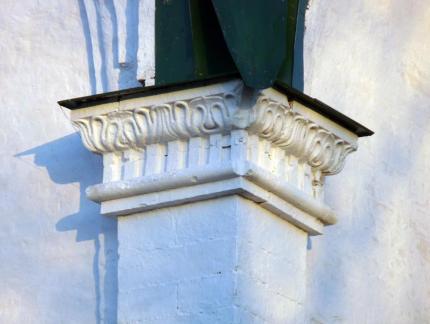The location of the aquifer is groundwater. Wells and wells: what are aquifers
Water on our planet is located in 3 main places: oceans, groundwaters, fresh lakes and rivers.
Groundwater is located in aquifers. An aquifer is a subsurface site, most often of horizontal orientation, with a high water content. Groundwater can be limited by layers of soil that do not allow water to pass through (water repellent) or rock partially penetrating water.
Groundwater is located in one of 3 aquifers:
- - 1 aquifer (top water), usually located at a depth of 25 meters, the exact depth depends on the hydrogeological features of the area;
- - 2 aquifer, is pressure or non-pressure and is located at a depth of 40 - 90 meters;
- - artesian water or 3 aquifers is characterized by occurrence at a depth of 110 to 200 meters.
The main characteristics of the aquifer:
- - the amount of water that can be pumped out per unit of time is usually measured in liters / second or cubic meters / hour;
- - seasonal amplitude of the water level, the indicator describes the depth of water at different times of the year;
- - the depth of the sole and roof of the aquifer;
- - the power of the aquifer, that is, the thickness of the soil layer containing water.
First aquifer
The most accessible water is located near the surface, at a depth of 3 to 25 meters. Such water is usually extracted using a well that can be dug up without using special equipment. The source of water for the “top water” is surface water: rain, snow. Surface water seeps through the soil and accumulates above the first water-resistant layer.
Characteristic disadvantages of water from 1 aquifer: water accumulates impurities from the surface of the earth (fertilizers, organic impurities from the surface of the earth); water accumulates impurities seeping through loose rocks; the amount of water in the first aquifer is limited and unstable, highly dependent on precipitation, season and temperature.
The main disadvantage of 1 aquifer as a long-term source of water is a short service life, a maximum of several years.
Water from 1 aquifer does not meet the requirements for drinking water and its filtration is expensive, therefore, such water is used only for domestic needs.
Second aquifer
2, the aquifer is protected from external influences by an upper water-resistant soil layer; therefore, atmospheric water and external pollution do not enter this horizon. Water from the second aquifer is much better than from the high water and after minor cleaning it can be used as food.
Another great advantage of the second aquifer over the first is a large supply of water and a long period of non-stop operation.
Third aquifer
The well in the country is sometimes the only source of drinking water, and I want the water quality in it to be good. Therefore, already at the stage of water search, it is necessary to know at what depths the best aquifers are located. To get to them, you need to explore the entire site and choose the most successful place. Consider how to find water for a well in various ways.
Water in the earth is held thanks to the water-resistant layers, which do not let it to the surface or more deeply. The main component of the layers is clay, which is very resistant to moisture. Sometimes stones are also found. Between the clay layers is a sandy layer that holds clean water. This is the aquifer, which must be reached in the process of digging a well.
In some places, the sand vein can be thin, in others - of huge size. The largest volumes of water are obtained in the places of fractures of the water-resistant layer, which is located not strictly horizontally, but with elevations, bends. And where the clay makes a curvature, changes the direction of height, a kind of breaks are obtained, which are filled with wet sand. These places are so saturated with water that they were called "underground lakes."
How does water quality depend on depth?
When digging a well, you can stumble upon an aquifer very quickly - already at 2-2.5 meters from ground level. Drinking water from such aquifers is undesirable. Due to the proximity to the surface of the soil, rainwater, melting snow, sewer drains, polluting the water and significantly impairing its quality, penetrate the vein from above. For specialists, such surface conductors are indicated by a special term - overhead water. In addition, these layers are quite unstable. If there is heat in the summer and there is no rain, the water from the high-water lakes disappears, which means that it will disappear in the well. So in the most "peak" summer season, summer residents can remain without water, and until the fall.

The optimal depth at which to search for water for a well is 15 meters. At this depth, there is a line of continental sand containing very large volumes of water. A significant thickness of the sand layer contributes to the maximum cleaning of the aquifer from all kinds of debris and "chemistry".
Aquifer search by observation methods
To find water, it is not necessary to invite specialists. For many centuries, people in villages have managed on their own, using observations of nature and animals.
Fog observations
In the warm season, early in the morning or in the late afternoon, inspect the site. Where groundwater is close, fog forms near the ground. And by its consistency, you can determine how deep the aquifer is located. The thicker the fog, the closer the water. Fogs caused by rising moisture from the earth do not stand still, but come out in clubs or creep near the soil itself.
The behavior of animals in the heat
Field mice will not make nests on the ground if water is near. They will transfer their housing to tall plants, tree branches.
If the owner has a dog or horse, then in the summer, when there is spec, it is necessary to observe their behavior. Because of thirst, horses begin to search for water in the soil and beat their hoof in the place where the highest level of humidity is. Dogs try to “bring down” their body temperature at least a little, therefore they dig holes in damp places and take cover in them. Moisture, evaporating, cools the earth, so animals tend to lie down at these points.

Dogs feel near water and dig holes in these places to hide from the heat
Poultry is also a good indicator. The chicken does not rush where it feels the proximity of water, but the goose specifically selects places where aquifers intersect.
By the evening, when the heat subsides, you can observe midges. They begin to pile up and form “columns” above the wettest parts of the site.
Reconnaissance Drilling Method
Assortment of indicator plants on the site
Long since the depth of the aquifer, humans have been informed by plants. Moisturizers will never live in places where groundwater is very deep. But if mother-and-stepmother, hemlock, sorrel, nettle are rampant at the cottage, it means that there is enough moisture in the soil.

From the plants growing in the country, you can determine at what depth an aquifer passes
Alder, willow and birch trees grow well on moist soils. If their crown is tilted in one direction - it means that there should look for an aquifer. They will never grow well in places with close groundwater levels of apple, cherry. The fruits will constantly rot, and the tree will hurt.
Practical methods of finding water for a well
In addition to observations, you can use various devices for searches. Consider how to search for water for a well using objects.
Arranging glass jars
In the morning, arrange glass jars over the entire area of \u200b\u200bthe same volume, turning them upside down to the ground. The next morning, check for condensation. The larger it is, the closer the aquifer.
Lay out salt or brick
We expect that rains will not fall a couple of days, and the soil will become dry. We take dry salt or red brick, crushed into small pieces, pour into a clay pot (unglazed). Weigh, record the testimony, wrap everything in gauze or spandex and bury it in the ground for half a meter. After a day, we take out the pot, remove the material and re-weigh it. The greater the difference in mass, the closer the aquifer. By the way, silica gel is also suitable for modern dehumidifiers.
Indication of aluminum or vine frames
1 way:
- We take two pieces of aluminum wire of 40 cm and bend 15 cm at a right angle.
- We insert them into the hollow tube (preferably cut out from elderberry and remove the core).
- Check that the wire rotates freely in the tube.
- We take the pipe in both hands and go along the site. The ends of the wire should be turned left and right. If there is an aquifer under your feet, the wires will converge to the middle. If water is detected to the right or left of the person - the ends of the wires will turn in this direction. As soon as the aquifer has passed, the wire will again turn in different directions.
- Having found the place of aluminum closure, go through again, but perpendicular to the direction in which you moved first. If the place of closure is repeated - dig a well there.
2 way:
- We cut a branch from the vine in which there are two forks on one trunk, going at an angle of 150 degrees to each other.
- Bring home and dry.
- We arrive at the cottage, take the ends of the branches in both hands, so that the trunk is in the middle and points up.
- We go around the site. As soon as the trunk leaned to the ground - there you should look for water.

Raised up the trunk of the vine will bend to the ground as soon as he feels close water
Vine and aluminum give a signal that there is water in the ground, but it can be a topwater that is not suitable for a well. Therefore, after finding out places with high humidity, conduct a preliminary drilling to understand at what depth the aquifer is located.
Groundwater level has a direct impact on determining the type and level of foundation footing. In addition, a map of aquifers is required when drilling artesian wells. Without its presence, it is difficult to predict the scope of work and the operational characteristics of a future facility, the occurrence of flooding and dampness in the basement, and also to find out how much concrete rings, for example, are required when constructing a mine well. Having on hand a groundwater location scheme, you can determine the optimal location and direction of the slope of the drainage system and choose the best installation location for the water well.
What is an aquifer map?
Hydrogeological study of soils allows you to determine the types and characteristics of soil layers in a small area or vast territory, as well as the level of groundwater. Based on the study and analysis of the results, a number of documents are compiled. As a rule, the local archives of settlements have long had geological sections and maps of aquifers. But outside the city or on newly mastered sites, it is required to extract soil samples and determine the location of the underground levels of water mirrors.
The map of aquifers is a diagram of the occurrence of all types of groundwater in a longitudinal geological section, with the designation of soil layers and aquifers, or a plan indicating the levels and directions of free flows.
Under the ground, water behaves somewhat differently than in a tank, where there is no doubt about the horizontalness of its level. In the thickness of the soil, the line of a water mirror can bend under the influence of many factors:
- terrain
- form and placement of water-resistant layers;
- recharge and reset options;
- capacity and density of soil strata;
- proximity of water bodies, etc.

When compiling maps, they use measurements of natural gas sources in accessible natural and artificial sources. It can be wells and workings, wells and pits, water bodies and water gauging posts. For the "purity" of the data obtained, measurements at points located nearby from each other are performed on the same day due to the fact that the groundwater level can significantly change under the influence of external influences. In this regard, maps of aquifers must be dated.
If during the construction of the site, groundwater can be detected during the construction of a pit, then when performing a mine well or artesian well, specialists will need to look at the map of aquifers. Its absence in most cases leads to unforeseen situations. For example, in the process of lowering the well rings, it may turn out that the water is much deeper than the expected mark. The meaning in further work will disappear by itself, and the rings are likely to remain in the ground. In this case, it would be more profitable to immediately dwell on the well structure.
Experienced craftsmen recommend that you do not neglect to familiarize yourself with maps of aquifers or conduct exploratory drilling. By the way, it is possible to determine the proximity of the aquifer by folk methods, but this does not always lead to the discovery of drinking water.

Varieties of cards
Measured groundwater levels are plotted on charts or graphs. The name of the documents depends on the information available on them. The most common are cards:
- hydroisogypsum;
- hydroisopiesis;
- groundwater level changes;
- fluctuations in water depth in wells;
- hydrogeological sections, etc.
Maps hydroisogypsum and hydroisopiesis are performed according to available data. The piezometric surface is characterized by pressure of pressure water and the height of their horizon. The term itself does not have a definite meaning, and the conditional level of the surface of the water can be located both above the ground and below it. In other words, this is the height to which water rises in open artesian wells. This indicator affects the length of the casing, the upper edge of which should rise above the piezometric surface.

For non-pressure conditions, a hydroisogypsum map is created. They characterize a single system of water movement in aquifers. By the location of the lines on the graphic plans, you can determine:
- features of the direction and bias of flows;
- level and nature of the location of free surfaces;
- places of feeding layers and centers of unloading;
- connection of underground waters with open reservoirs - flows are drained or fed by the river.
It should be noted that the upper level of non-pressure water remains almost horizontal. Nevertheless, several curved lines are drawn on the plan of aquifers connecting the same elevations of groundwater mirrors.
Often hydroisogypsum maps are marked with hydroisobat lines, which are built on the basis of interpolation.
Groundwater classification
Groundwater is grouped by nature (hydrodynamics) and depth. First of all, they distinguish:
- non-pressure waters - “rely” on the first aquifer from the surface of the earth. Their upper level is unstable and depends on the presence of precipitation in a certain period of time, intense melting of snow or drought. The water-permeable layer is partially saturated with groundwater, and their surface remains free;
- pressure water - located at a greater depth, between two aquifers.

According to the depth of placement in the thickness of the soil, groundwater is divided into four types.
Verkhovodka - depth up to five meters. Recharge is made due to precipitation. For the construction of wells, the overhead water is far from the best option, since in the dry period the water can simply disappear, and in the rainy period - not have time to filter out.
Groundwater - depth up to ten meters. Clay serves as a water-resistant reservoir, therefore, the source should not be used as a drinking one. In addition, if the soil thickness above the aquifer is less than six meters, sufficient water filtration will not occur, but the risk of contamination with technical fluids will be too great.
Interstratal waters - depth from 10 to 100 meters. As a rule, they are located between horizontally waterproof layers, although the above layer may also be permeable. Interstratal waters are considered the most optimal option for the construction of wells. Sufficient depth provides good filtration and uninterrupted water supply using domestic pumping equipment.
Artesian waters - the deepest occurrence (more than a hundred meters underground). Water is maximally cleared of pollution naturally, therefore it does not require additional filtration. But the composition may contain an unacceptable concentration of mineral inclusions. An artesian well is being drilled for collective use, since the volume of incoming water is incommensurable with the needs of one private home ownership, not to mention the high cost of installing a deep water intake.
It should be noted that for the foundations, the main factor is not the purity of the groundwater, but their level. It is he who influences the decision on the design features of the foundation, as well as on the list of measures for its hydraulic protection.
In order to correctly select the type, specific characteristics of a drinking water well, it is first necessary to determine how deep the water lies in the ground, i.e. where is the aquifer.
Aquifers are strata of aquiferous soil lying between layers of water-resistant soils (stony / clay), located far from necessarily horizontally. Because they reflect the terrain, there is a high probability that there is water in the basins, on the slopes / plains there is less or no water at all.
It should be understood that the close occurrence of groundwater is bad. This leads to seasonal flooding of the territory, waterlogging of the terrain, the movement of the foundation, the violation of its integrity. Such water reserves are replenished mainly by melting snow in the spring, precipitation, i.e. they are volatile, often dry up, cannot be a reliable source of water supply. In addition, their cleanliness is a big question, so it is not recommended to use them for drinking and cooking, only for household needs (flushing, watering, possibly washing).
Determination of the location of aquifers
Immediately begin construction of a well / well, not knowing the place of occurrence of water - to waste time, effort, considerable money. Preliminary research is required.
The simplest option is to ask about the occurrence of a layer of water in neighboring areas. A significant difference in depth relative to the nearest wells / wells is hardly possible. You can also find seasonal fluctuations in the water level from neighboring wells - the corresponding marks remain on the walls.
You can also use map data. For more or less populated areas, maps indicating the presence and depth of groundwater layers have already been created, the territory is divided into hydrological areas.
Barometric research
If the location of the proposed location of the well is near a natural reservoir, with a high degree of probability there will be water on the site, and its location can be determined using a barometer. From his testimony on the shore of the reservoir, the data obtained at the selected point of the site is subtracted. Because a change of 1 mm corresponds to a height difference of 1 m, then the result is multiplied by 100. That is, a difference of 0.5 mm will indicate an aquifer at about 5 meters. However, this option is only suitable for determining the place under the well on the sand / well, it will not be possible to find deeply located artesian waters.
Folk ways
If the previous methods did not give anything, you can resort to folk recipes for finding water. They are as always simple, do not require financial costs, but their accuracy is a big question. The maximum that they can indicate is the fact of the presence of an aquifer in principle and its very approximate depth. To clarify the data can not do without drilling.
To determine that the water in the area is relatively shallow, you can, for example, using a package of silica gel. It is placed in a clay unglazed container, wrapped with a cloth, buried in the ground for at least a day. If silica gel has significantly changed the volume / mass, there is water nearby, it is worthwhile to do more accurate studies of the depth of its location.
Nature watching
Because saturated with liquid soil tends to evaporate it, the proximity of the groundwater indicates the fog over the site in hot summer weather in the early morning / late evening. In addition, aquifers are indicated by:
- Pillars of insects in the evening;
- Lush, lush vegetation (species that love moist soils);
- Abundance of moss;
- Abundant dew in the morning.
Some plants indicate a more specific depth of the aquifer:
- Rogoz - less than 1 m;
- Sand reeds 1-3 m;
- Poplar (black) - 0, 5 - 3 m;
- Reed, sucker - 1-5 m;
- Wormwood - 3-7 m;
- Alfalfa, licorice - 2-10 m.
The above methods of finding water are very approximate, have a high probability of errors. They can determine the appropriateness of reconnaissance drilling, give only a general answer to the question of whether there is water at all in this place, and indicate the extremely vague boundaries of its occurrence. Absolutely accurately determine all the characteristics of the aquifer can only be drilling.
Test drilling
At a shallow depth (up to 2-3 meters), it can be produced even on your own, using an ordinary garden drill. If in the absence of precipitation within 1-2 days water did not appear in these test wells, the aquifers are deeper. To investigate the soil at greater depths, the help of specialists is indispensable. In addition to test drilling, they immediately carry out a qualitative analysis of water for suitability for drinking, according to the results of this study, you can determine the appropriate water treatment system to ensure the safety of its use.
Where and which well to equip?
Depending on the depth of the aquifer determined by the results of studies, different types of sources are equipped on the site:
- The well is up to 10-12 m. Regular seasonal fluctuations in the water level are observed in it, and periodic sampling is required to determine its purity. The life of the well is up to 10-15 years.
- Well “on the sand” - up to 40-50 m. The service life can vary from several years to several decades.
- Artesian wells are drilled up to 100-200 m, can provide a constant flow of high quality water. Service life - 40-50 years.
As for the choice of a place for a well, it should be located at the maximum distance from potential sources of pollution - compost, garbage heaps, drainage trenches, etc. It is good if the source of water is at the same time elevated from them.
Providing a sufficient amount of water for a comfortable stay is one of the first tasks that need to be solved after acquiring a country house or cottage. The presence of a centralized water supply system does not always cope with the tasks set, water can be intermittently supplied, and its quality often does not meet the requirements of sanitary norms. In addition, old worn pipelines can add an unpleasant metallic taste to water.
The best solution for a private house is the construction of a wellThe organization of individual water supply solves these problems and sooner or later the owners of the site come to the decision to drill a well or. At the same time, a considerable part makes a choice in favor of a well, because it is easier to maintain and clean, it is independent of power supply, and a beautifully designed well house will serve as an additional decoration of the house territory. After the decision to build, questions immediately arise: is there water in the site, what is its quality, how deep is the aquifer, and how to find it?
At what depth is the aquifer
Water reserves are stored in the bowels of the earth at a certain level due to the presence of water-resistant layers. Constant replenishment of reserves is provided by precipitation, snowmelt, water infiltration (seepage) from nearby surface water bodies (lakes, swamps, rivers). The waterproof layer consists of clay or stone and prevents the penetration of moisture to a depth, and also protects it from pollution. located on top of or between two such waterproof layers. Depending on the location and depth, such aquifers are distinguished:
- "The High War." Located no deeper than four meters from the surface. Moisture accumulation occurs due to the filtration of precipitation and melt water through the upper soil layers. Such sources of moisture are not able to provide a constant level of water in the layer, therefore, in winter the level decreases, and in the dry season the reserves may completely run out. Due to the small occurrence depth, such sources along with incoming sediments get contaminants on the surface, a thin layer of soil is not able to provide high-quality filtration. The quality of such water is not suitable for drinking, moreover, it can pollute the well.
- Groundwater is located at a depth of several tens of meters, but in some places (lowlands and depressions) they come close to the surface. The aquifer is located above the first waterproof layer, the presence of water in it is constant, but the level depends on the intensity of precipitation and the distance to the nearest open water bodies. During construction, the depth of the well is determined taking into account seasonal fluctuations in the level of groundwater. It is not recommended to dig a well in the area in early spring, when the abundance of meltwater contributes to raising the level to the maximum mark. The best time is considered to be the second half of summer and early autumn, when the level drops to a minimum. The quality of water depends on the depth, filtering ability and the level of pollution of the rocks located above it. Groundwater is the first aquifer, the water from which meets sanitary standards and is suitable for drinking. This aquifer supplies the well with moisture, ensuring the performance of mine structures at a level of 1 m³ to 10 m³ per day.
- The inter-layer aquifer is located between the waterproof layers and is protected from contaminants from the layers above and from the surface. Taste and environmental properties of water from such veins are at a height, however, for its intake, drilling a well will be required.
For most populated areas, a map of aquifers is created, indicating the depth of water in different areas. Before conducting reconnaissance, it is worth asking about its availability in the public domain on the Internet.
The quality of water depends on the depth of the aquifer
"Grandfather" methods of water search
Long before the advent of modern search methods using technical means, our ancestors were able to accurately determine the place for the well. At the same time, the quality of well water was considered unsurpassed and was repeatedly sung in folklore. Some traditional methods are applied now:
- Dowsing. Previously, this activity was held in high esteem and respect; images of people of this profession are found on medieval engravings and paintings. Their work was shrouded in mystery, and dowsers attributed magical properties. Now, having read the special literature, everyone can try to search for water for a well on a site using a vine or a dowsing frame. The effectiveness of the method has been proven over centuries of practice, but success depends on the experience and observation of the dowser.
- Inverted vessel. Previously, a clay dry pot was used for this method. However, you can search for water for a well in this way using any vessel. For this, the vessels are placed upside down in different areas and left for some time. You can determine where to dig a well by the amount of condensate that has accumulated. There is another option: absorbent is poured into the vessel, wrapped in tissue and buried. After 10-12 hours, the vessels are dug up and checked using a balance, where the absorbent has absorbed more water.
- Plants. The accumulation in certain places of hygrophilous plants will tell you where to look for water for the well. Willow and alder grow only on moist soils, at the same time, some fruit trees (apple, cherry) do not tolerate excessively moist soil.
- Atmospheric phenomena. It is worth observing the fog early - it will be especially dense in humid lowlands, besides there is plentiful dew in such places.
There are also a number of signs based on the fact that animals, birds and insects are able to feel the aquifer. Following them, you can try to find a place for the well:
- Ants build dwellings at a distance from underground sources.
- Mosquitoes and midges, on the contrary, like moisture, in such places their accumulation is observed.
- In hot weather, a horse beats a hoof over a spring, and a dog digs a hole.
- Cats do not like excessive dampness and settle on rest away from wet places.
- Ducks and geese lay their eggs over the source, but hens prefer to lay in dry places.
Alternative methods are not always effective, but they should not be neglected.
Often, the results of observations are used in the subsequent exploratory drilling to reduce the amount of work - the search for water in predetermined areas.
Professional methods for finding water
Modern methods allow you to determine the location for a well with greater accuracy. Some of them are performed on their own, without resorting to specialists and without purchasing expensive equipment.
- Exploratory drilling. This method is simple and, at the same time, gives accurate results - the thickness of aquifers, the depth of occurrence, the presence of obstacles in the form of stones are determined and it is possible to take a water sample for analysis. For work, a manual garden drill is used with the possibility of extending the handle to 10 m. When drilling, the drill is removed from the pit after passing every 15-20 cm, this will prevent the drill from breaking and help determine the aquifer in the well.
- The difference in atmospheric pressure. This method allows you to find water for a well using a barometer. The choice of location for the well is based on the difference in atmospheric pressure at different heights. With the help of this device, measurements are made at the water level of a nearby open reservoir and in its own area. After that, two numbers are compared and calculations are made. At the same time, it is taken into account that 1 mm of mercury is equal to 13.6 mm of water and indicates a difference in height of 13-14 m. So, with a difference of 2 mm, the depth of the aquifer is 26-28 m.
- Electrolytic sensing. Probes are immersed in the ground, and the presence of water is determined by measuring the resistivity. Aquifer can be determined by changing the resistance to indicators of 50-200 Ohms. The presence in the immediate vicinity of the place of work of metal structures greatly distorts the research results, so this method is used extremely rarely.
WATCH THE VIDEO






